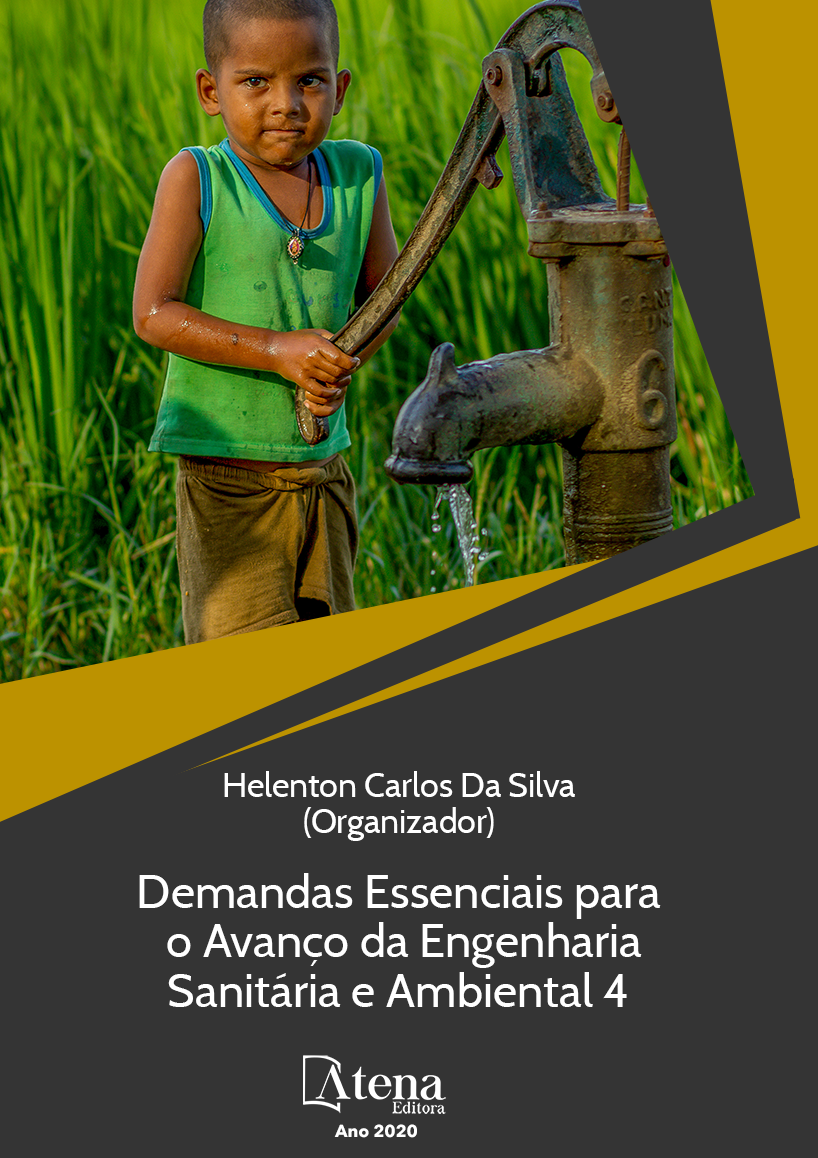
ESTUDO EXPERIMENTAL E MODELAGEM MATEMÁTICA DE UM REATOR ANAERÓBIO HORIZONTAL DE LEITO FIXO (RAHLF) PARA TRATAMENTO BIOLÓGICO DE EFLUENTE SINTÉTICO CONTENDO D-LIMONENO
O Brasil é o detentor da maior
parcela da produção mundial de suco de laranja
concentrado. Como consequência dessa alta
produção, são geradas grandes quantidades
de efluentes líquidos que necessitam ser
tratados em adequados sistemas de tratamento
implantados nas indústrias cítricas, geralmente
constituídas de unidades biológicas que visam
remover especificamente matéria orgânica.
Tais unidades não atingem as eficiências
desejadas muito em função da inibição da
atividade biológica pela presença de compostos
tóxicos residuais, como o D-limoneno (terpeno),
extraído da casca da laranja. Neste contexto,
o objetivo principal deste trabalho foi avaliar a
degradação de D-limoneno em reator anaeróbio
horizontal de leito fixo com biomassa imobilizada
em diferentes suportes inertes e operado com
diferentes concentrações de D-limoneno na
alimentação (C0 = 10 – 500 mg.L-1). Um modelo
matemático simples foi proposto para descrever
o processo de remoção de D-limoneno, o qual
permitiu determinar a constante aparente de
remoção para cada ensaio realizado. Assim, tais estudos podem contribuir para a
efetiva melhoria operacional dos sistemas de tratamento empregados pelas indústrias
cítricas, aumentando a eficiência de remoção de D-limoneno e, consequentemente,
causando menor impacto ambiental dos efluentes gerados.
ESTUDO EXPERIMENTAL E MODELAGEM MATEMÁTICA DE UM REATOR ANAERÓBIO HORIZONTAL DE LEITO FIXO (RAHLF) PARA TRATAMENTO BIOLÓGICO DE EFLUENTE SINTÉTICO CONTENDO D-LIMONENO
-
Palavras-chave: D-limoneno; tratamento anaeróbio; modelagem matemática
-
Keywords: D-limonene; anaerobic treatment; mathematical modeling
-
Abstract:
Brazil is considered the one of greatest orange juice producer in the world.
As a result, high amount of wastewater is generated, making necessary its treatment.
Most treatment of these wastewaters has been carried out in biological treatment
plants. However, low removal efficiency has been achieved when using anaerobic or/
and aerobic processes especially due to biological inhibition by toxic compounds, like
the D-limonene, present in these wastewaters. The terpene D-limonene is extracted
from the orange hulls and high amount of this residue can be found in the citric
industrial effluents. In this study, the main objective was to evaluate the D-limonene
biodegradability in a bench-scale horizontal-flow anaerobic immobilized sludge (HAIS)
reactor. Different biomass supports were used and the D-limonene concentration in
the substrate feed stream (C0) varied from 10 – 500 mgL-1. A mathematical model,
based on the experimental data behavior, was proposed to determine the D-limonene
apparent removal constant for each assay performed. The obtained results showed
that the system employed in this study can to improve the current wastewater treatment
systems in the industrial plants by promoting the D-limonene removal and reducing the
environmental impacts involved in the orange processing chain.
-
Número de páginas: 12
- Arnaldo Sarti
- Bruna Sampaio de Mello
- Brenda Clara Gomes Rodrigues
- Maria Angélica Martins Costa
- Samuel Conceição de Oliveira


